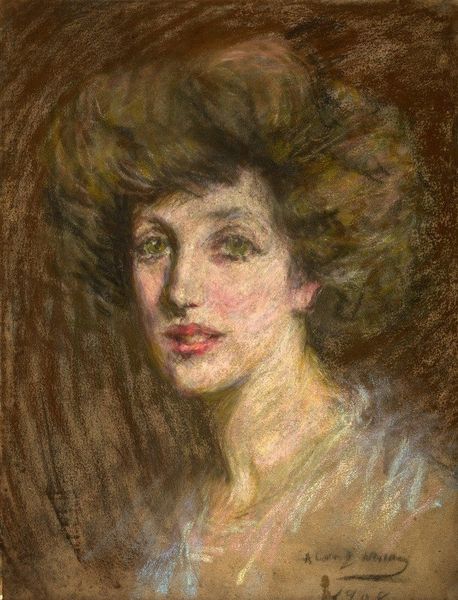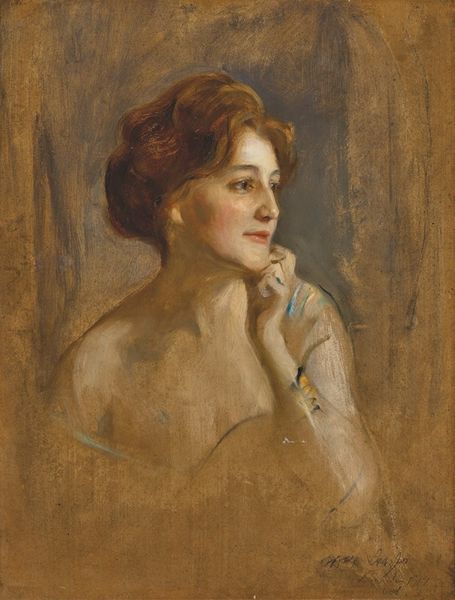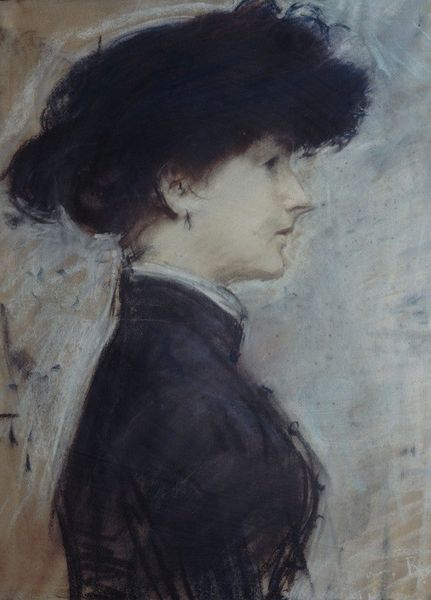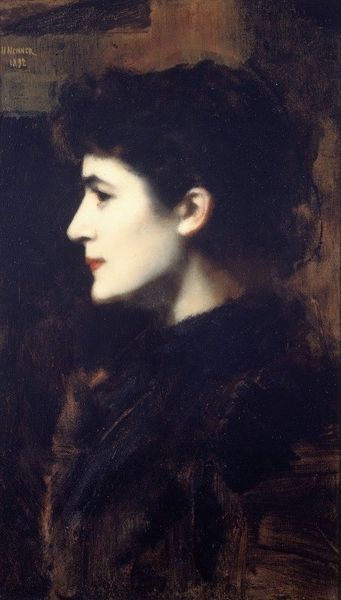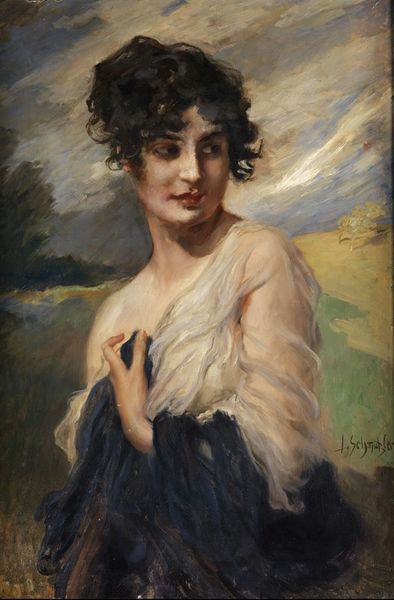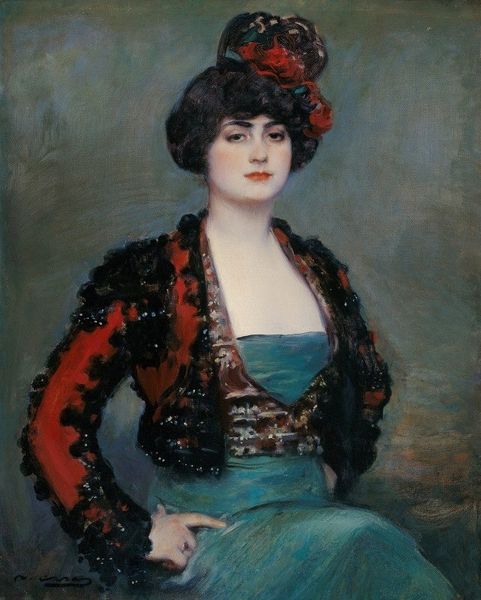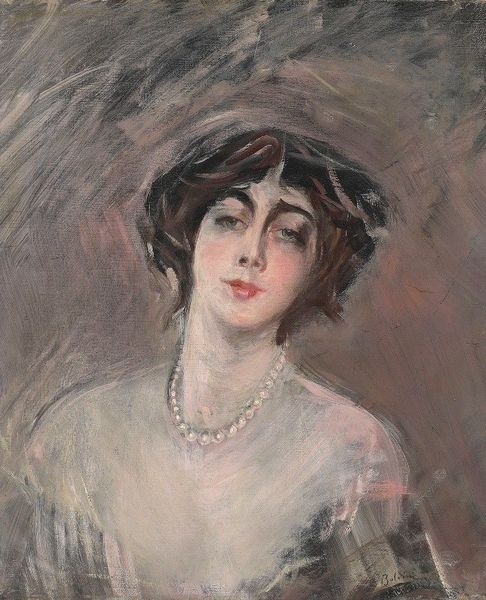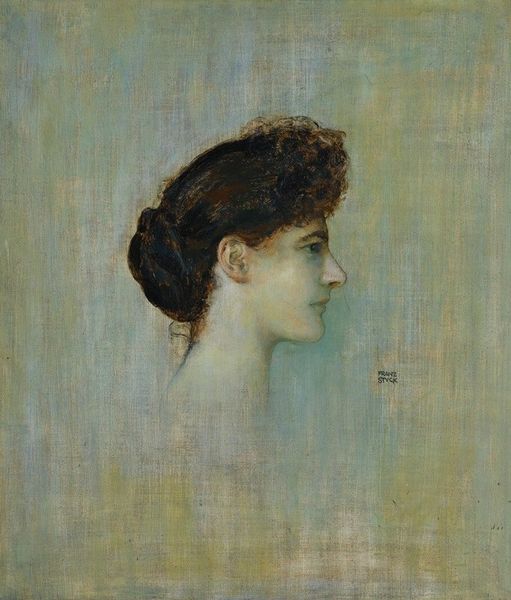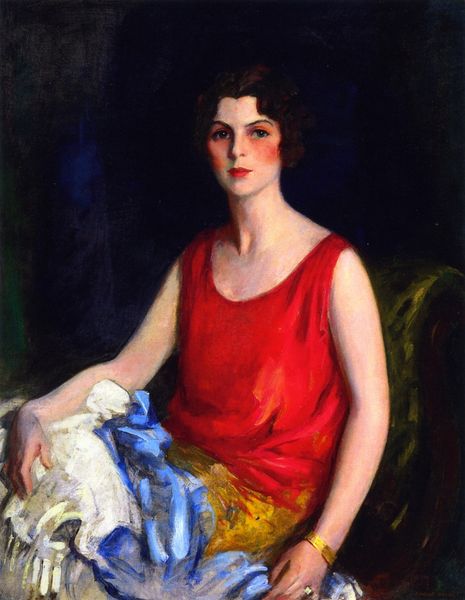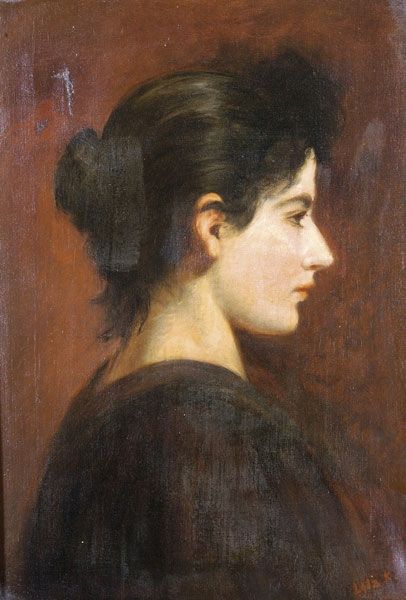
painting, oil-paint
#
portrait
#
figurative
#
painting
#
oil-paint
#
intimism
#
symbolism
#
portrait drawing
Copyright: Public Domain: Artvee
Curator: Standing before us is "FRAU FEEZ," an oil on canvas portrait painted in 1900 by Franz von Stuck. Editor: It's incredibly intimate; her gaze draws you right in. There's a sort of muted drama happening with those cool blues offset against her warm complexion and that rust-colored robe. Curator: Indeed. Von Stuck was a key figure in the Symbolist movement, a group that often explored the inner world and subjective experience. This painting, beyond being a likeness, serves as a vehicle to tap into a broader, more symbolic idea of femininity at the fin de siècle. Editor: Symbolism often looked toward idealized archetypes or moral allegories, but here I see a contemporary woman rendered with a kind of modern psychological realism. She feels very much of her time. You can imagine the portrait was displayed amongst fellow artists at the Munich Secession. Curator: Precisely! Notice how von Stuck’s style straddles portraiture and a more internalized sense of emotional depth? Look at the subject's direct gaze and soft-focused edges. It invites speculation. Is she demure? Or is there something darker stirring beneath the surface? Consider how such portrayals gave rise to a cult of feminine mystique... Editor: That play between surface appearance and internal state seems like it mirrors the complexities of gender roles at the time. A woman on the cusp of the 20th century navigating tradition versus modernity, perhaps? Curator: A portrait becomes more than a simple likeness when these layers of cultural history become part of its symbolism. It reveals social undercurrents and anxieties. Editor: Von Stuck’s approach reminds us how paintings serve not only as mirrors of society, but as lenses to interpret it. “FRAU FEEZ” is a captivating look back. Curator: A powerful statement—that also reflects how portraiture functions both as document and evocative image across epochs.
Comments
No comments
Be the first to comment and join the conversation on the ultimate creative platform.


